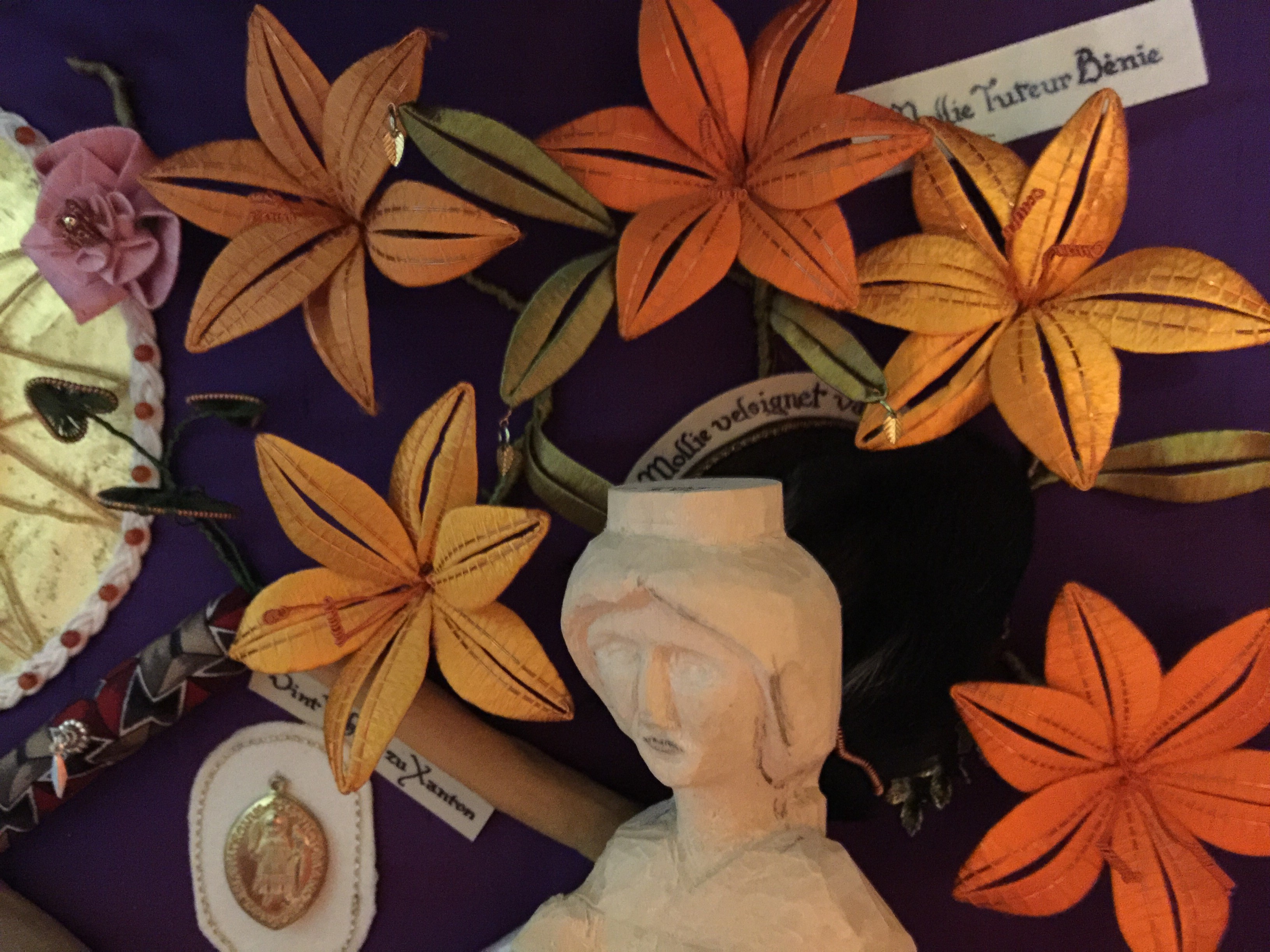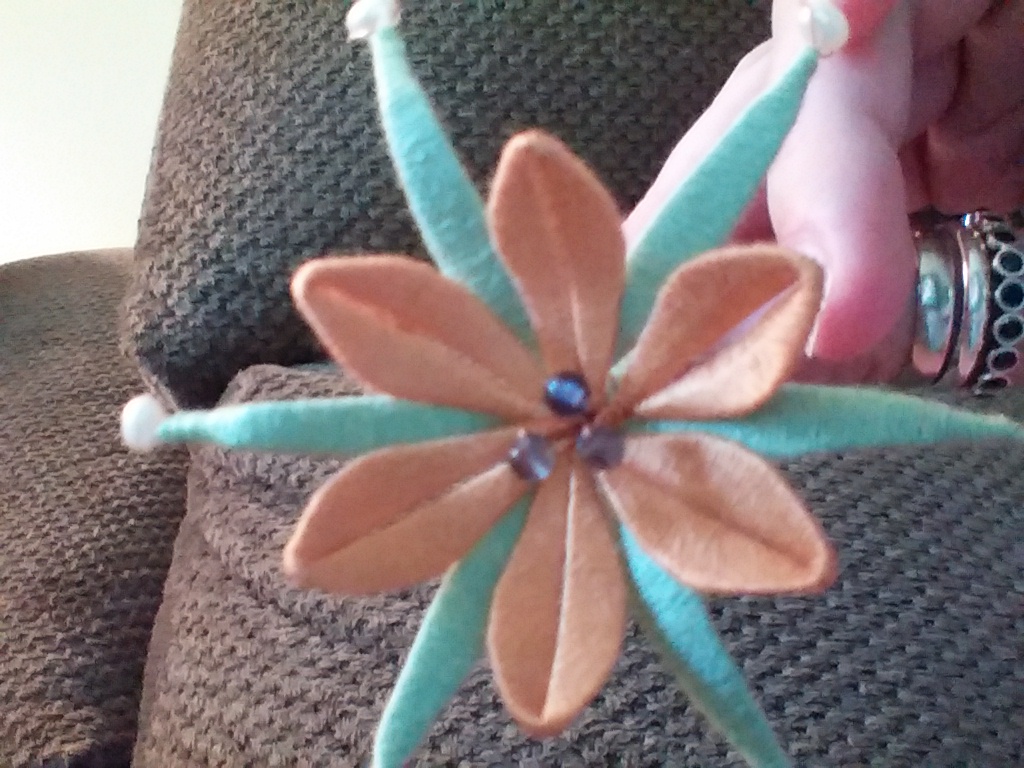I added to the lily collection so now there are five bright orange daylilies. All of them have the double-wire accent lines on the top of them and I found that the easiest way to wrap them is to use one very long wire, folded in half. The first half is wrapped in with the vellum and then, once wrapped, double the wire back and put in the accents on the top.
I also created several tiny five-petal flowers using the basic pattern I received in Minneapolis. It involves cutting the forms into tiny teardrops and then cutting a slit in the middle and winding with a small wire twisted into a needle (with a very round eye) shape. Winding is done with a needle and goes from middle to outside edge all the way around. Then I cut several quarter-sized ovals from the silk and started making buds to go with the flowers.
And then I started dandelions. Dandelions are little pompons and then, once wrapped, tease the silk out with a needle so it gets the very fluffy look. I also put small metal caps (the kind you use for accenting beads) on the bottom to direct all the fluffy upward. The larger the pompon the less likely you will see the center tie but the key is to get very small pompons.
I also took several of the pieces of deer hide (which was too thick and stiff for me) and soaked them in the sink and tied them into logs. I think these will make very nice branches for my “tree” as they will be wrapped in fabric and mounted on the back wall. I am also wrapping cherry pits in purple fabric for the grape clusters.
And I’m working on a prototype for a goat because I want the goat in the shrine.


